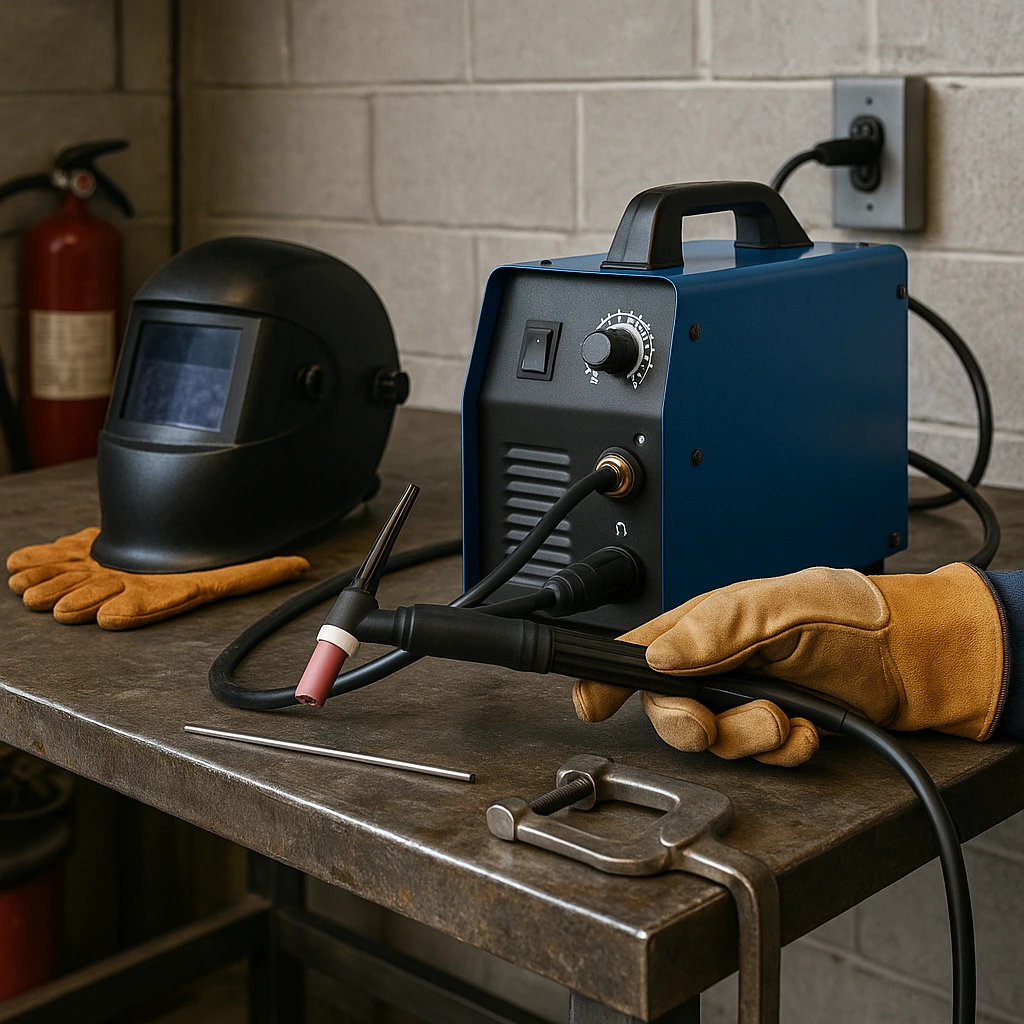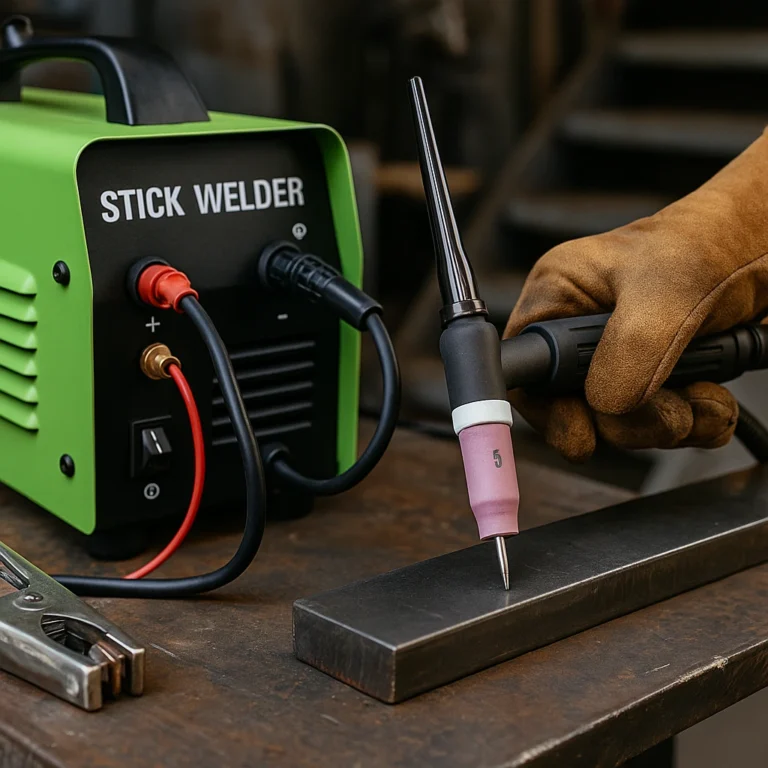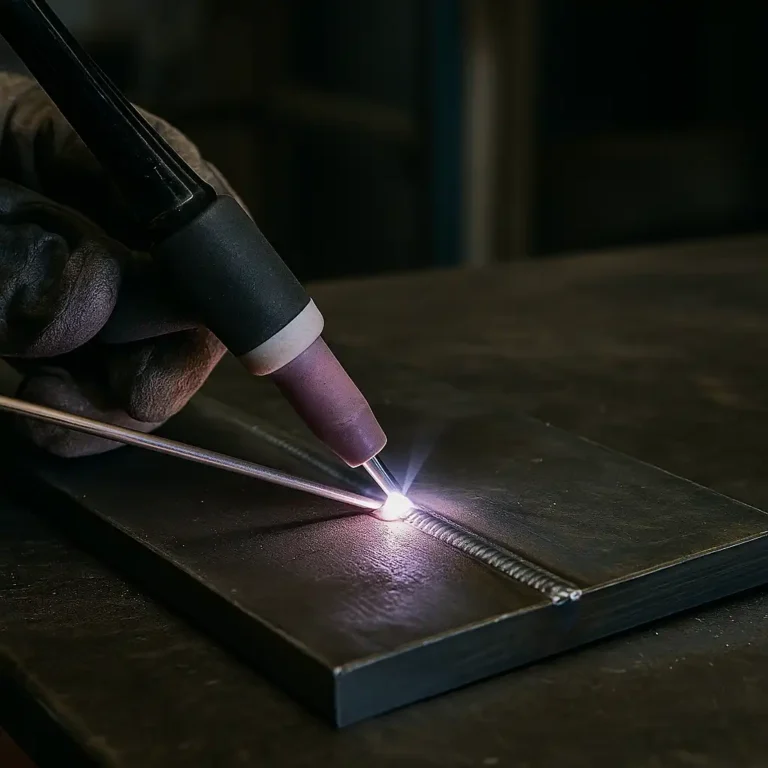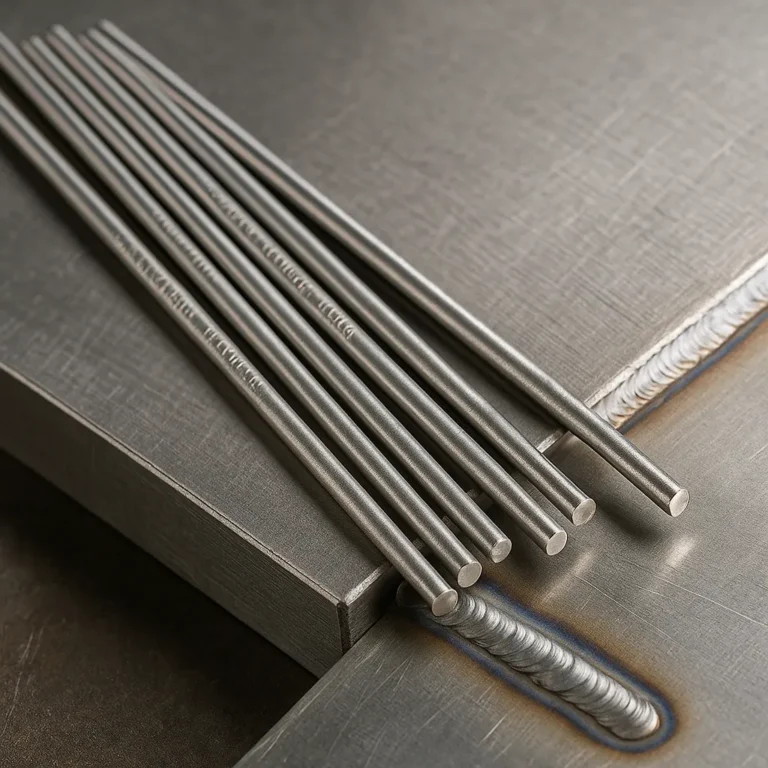Getting Started with TIG Welding – Tools and Setup Tips That Make Learning Easier

Disclosure: This post contains affiliate links. As an Amazon Associate, I earn from qualifying purchases—at no extra cost to you.
Last Updated: August 5, 2025
If you’re learning TIG welding, the gear you choose and how you set up your space can make or break your progress. This process is slower and more precise than MIG or stick, which means every piece of your setup has to pull its weight—especially if you’re working in a home garage or tight jobsite.
Not sure if your welding kit’s complete yet? Take a look at our beginner welder setup guide to get dialed in with the right gear from the start.
Choosing the Right TIG Welder
Start with a machine that can handle both AC and DC modes. DC is your go-to for steel and stainless, while AC is needed for aluminum. That flexibility opens up more types of projects, even at the beginner level.
High-frequency start is a must—it helps keep the tungsten clean and makes arc starts smoother. A foot pedal gives you even better control while you’re welding, which comes in handy for dialing in heat on thin materials. If you’re bouncing between home and jobsite, dual-voltage input gives you options no matter the outlet.
Must-Have Safety Gear for TIG
TIG is cleaner than most other types of welding, but you’re still right next to a bright arc that kicks out strong UV. Safety gear matters.
An auto-darkening helmet with quick response is key for low-amp TIG. Some cheaper helmets lag, which can leave your eyes feeling cooked by the end of a session. For gloves, go with a TIG-specific pair—thinner, better fit, and still enough protection for light work.
Leather sleeves or a lightweight welding jacket will keep your arms covered without making you overheat. Solid boots with heat resistance are a must, especially if you’re shifting metal around. And for indoor welders or anyone working with stainless, a low-profile respirator is worth having nearby.
Setting Up Your TIG Welding Space
You don’t need a full shop to TIG weld, but your space does need to be smart.
Good airflow is important, especially when you’re welding stainless or running beads for long stretches. Even though TIG doesn’t smoke like stick, fumes can still build up in tight spaces.
For power, stick with a grounded 220V outlet when you can. TIG runs best on stable, clean power. A steel welding table is ideal—ground it properly and skip any wood surfaces. You’ll also want bright lighting above your bench so you can see what the puddle’s doing.
Set up your torch holder and pedal in a way that feels natural. You’ll be using both hands and a foot to keep your arc right, so being comfortable goes a long way.
Storing Your TIG Tools and Managing Power
TIG setups get cluttered fast if you’re not organized. Keeping tools close and cables out of the way makes your space safer and more efficient.
A decent welding cart is worth it—it keeps your machine, tank, and cables together. Some welders build their own, but either way, make sure it rolls well and holds weight safely. Keep leads wrapped with velcro or hooks to avoid tangles and trip hazards.
Use heavy-duty extension cords rated for welding gear. Cheaper cords can cause voltage drops and unstable arcs. Set aside a bin or drawer for consumables like tungsten, cups, and filler rods. When you know where everything is, it’s easier to focus on the weld.
Where to Save vs Spend in TIG Welding
Not everything in a TIG setup has to be top dollar. But some things are worth spending on.
Put real money into your welder and foot pedal—those are tools you’ll rely on every session. Better machines give you smoother arcs, tighter control, and more reliable performance over time.
Carts, filler rods, and even gloves are places where you can save. A no-frills cart works fine if it holds your gear. Rod quality matters, but most mid-tier brands are great for practice and even small jobs. With gloves, it’s more about fit and feel than brand name.
FAQ
Can I use my MIG helmet for TIG?
Only if it reacts quickly to low-amp arcs. Some budget lids don’t switch fast enough, which strains your eyes.
What’s the best material to start TIG welding on?
Mild steel is easier to work with and doesn’t need AC or special prep like aluminum.
Is TIG harder to learn than MIG?
Yeah—it takes more coordination since you’re using both hands and a foot. But once you get the rhythm, it’s worth the effort.
What kind of gas should I use for TIG?
Pure argon. No mixes—argon gives the cleanest arc and works across steel, aluminum, and stainless.
Conclusion
If you’re setting up for TIG welding at home or in the field, having the right gear and layout makes every job smoother. From machine control to cable management, the small stuff adds up fast. Get your setup right, and you’ll spend less time fighting the arc—and more time stacking clean beads.






